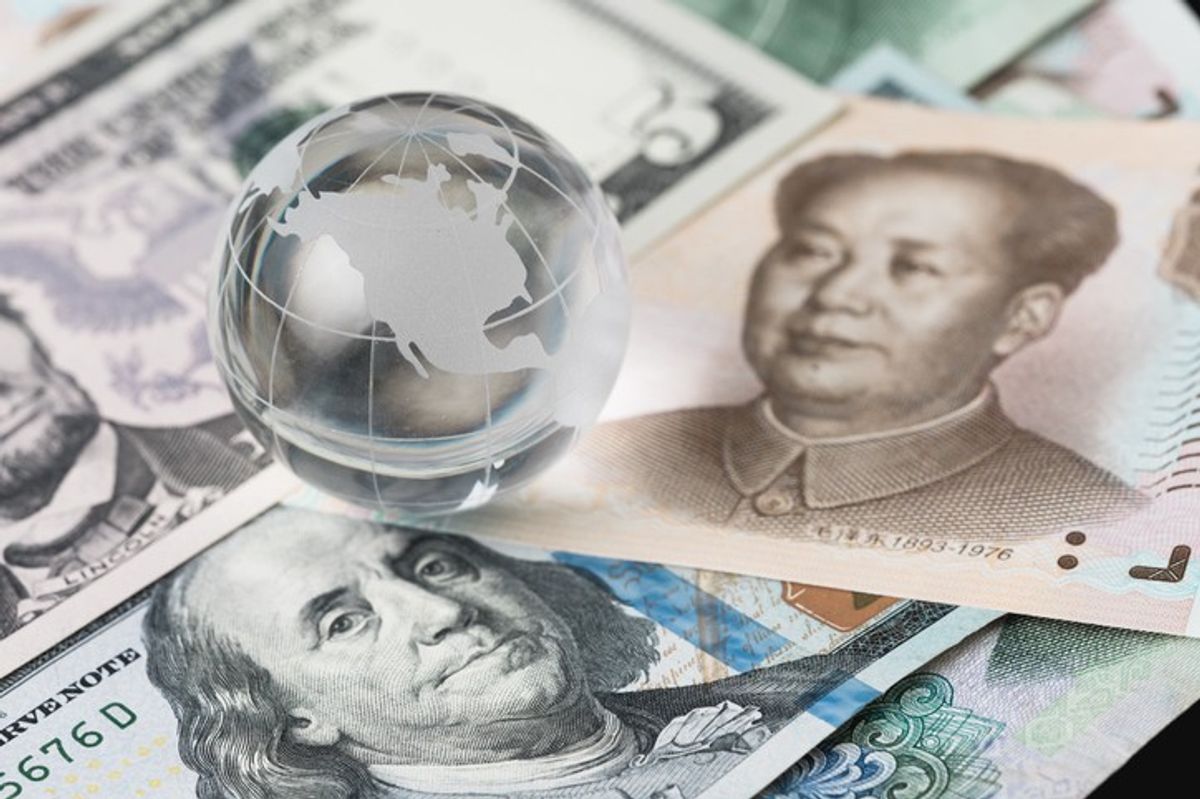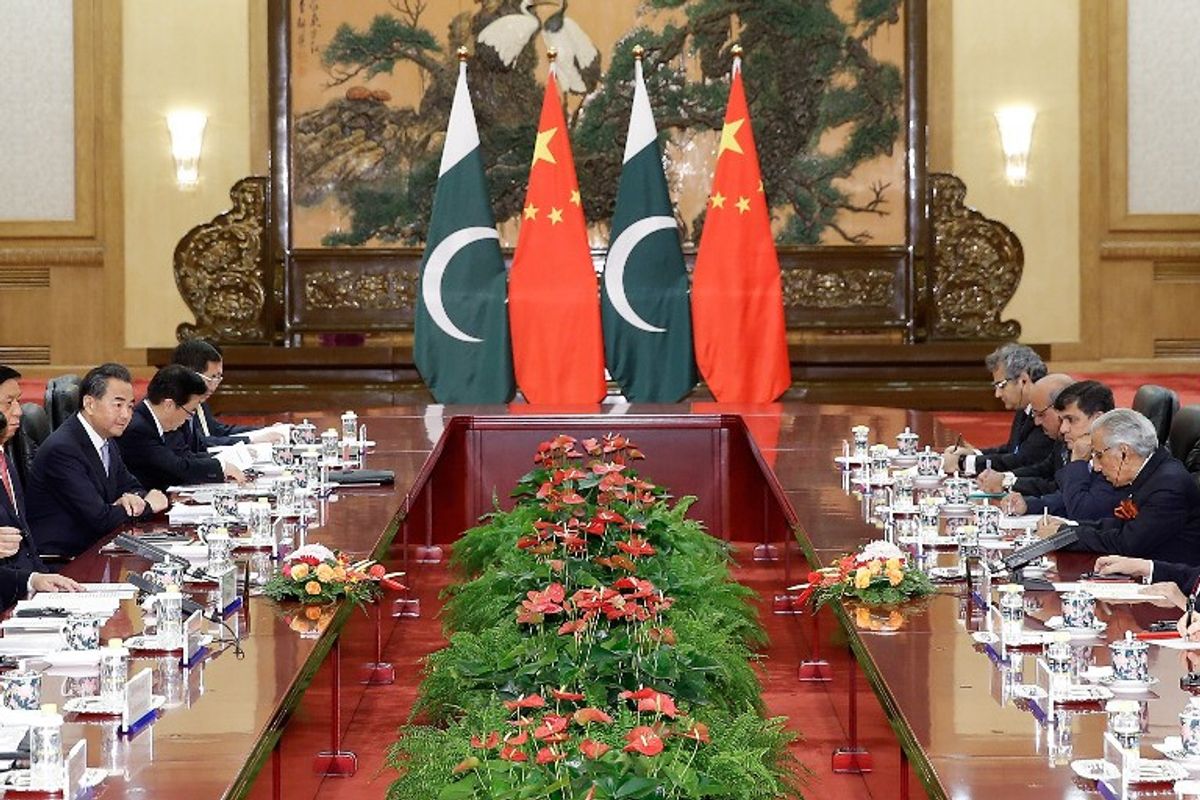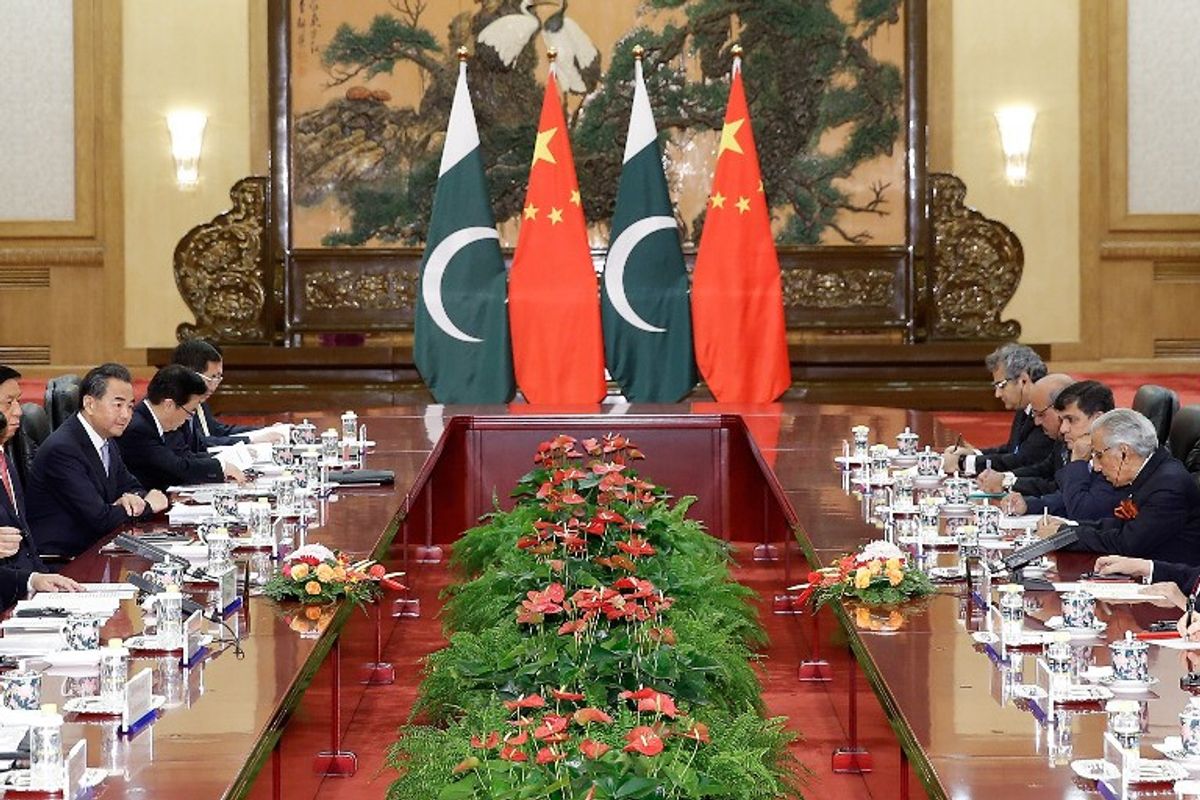In recent years, global trade growth has slowed significantly, even creeping below global GDP growth at a level that hasn’t been seen in decades. Some economists believe globalization has reached a natural upper limit. Others argue that the data does not reflect true stagnation or that new forces driving trade growth are not showing up in the numbers. The Cipher Brief’s Fritz Lodge spoke with Caroline Freund, a senior fellow at the Peterson Institute for International Economics, about the concept of "peak trade," and how the apparent slowdown in global trade could affect the global economy, global trade flows, and U.S. policy.
The Cipher Brief: The growth rate in trade of goods and services has leveled off in recent years compared to GDP growth. In your mind, how much credence is there to the notion of “peak trade?” Is it possible that globalization is hitting some upper limit?
Caroline Freund: I don’t give that much credence. I think it’s way too early to tell. This could be the case, but there isn’t any model that really tells us how trade should respond to GDP growth – whether it should grow twice as fast or just as fast or less – so there are no economic laws saying how this should work. For many years in the 1990s and early 2000s, trade was growing twice as fast as GDP, and now it has slowed to roughly the same growth rate as GDP, so many people look at that and think that trade is stagnating
But my interpretation of what’s happening is that when growth is slow, the response of trade to GDP growth also slows down. There is a kind of deceleration effect. Trade is mainly composed of goods – roughly 80 percent goods – and GDP is mainly composed of services – about 70 percent services. Thus, when you look at trade’s response to GDP growth, you really want to focus on GDP growth in goods, which has been slower than growth in services. This is a factor you have to consider.
So, in my view, stagnation in trade is mainly just a response to the slow global growth rates we’ve been experiencing for a number of years.
TCB: Do you think that protectionism – either the sort of “micro-protectionist” barriers that are quite common or the larger issue of protectionist trade rhetoric coming out of the Trump administration and other countries – is helping to fuel this trend?
CF: I think it’s too early for the protectionist rhetoric, at least, to have had a major impact. The liberalization that we saw from some of the large emerging markets, in the 90s especially, contributed to strong trade growth in the following years. But the kind of petty protection we’ve seen very recently just doesn’t explain the slowdown to me because if you look at the types of products that these protections are hitting, those aren’t the products where trade is falling. It doesn’t add up and these actions are just too small. Now, I think that the failure to liberalize – the fact that the Trans-Pacific Partnership (TPP) isn’t happening, for instance – could be contributing to slower trade growth, especially in the coming years.
TCB: Is it possible that trade is just returning to normal levels after an early boom in trade liberalization and highly diversified supply chains? That this is just a natural leveling-off?
CF: I think that is part of what’s happening. Let’s look at trade as measured in gross terms, where every time a good crosses a border the full amount is added – so if a semiconductor goes to China and it’s put into an iPhone and the iPhone leaves, the semiconductor is counted twice, once when it goes to China and once when it leaves. Because of that, when you’re developing supply chains you will see all of this new trade all of a sudden. Part of it was real, a new way to take advantage of more efficient production, but part of it was false in that we double, triple, or quadruple counted these goods that were jumping across many different borders in global supply chains.
That does explain some of why we saw this phenomenal growth in trade during the development of those global supply chains, which we really hadn’t seen before. But I don’t think it explains why trade is growing so slowly now. You would have seen a tapering off, but you wouldn’t have seen a sudden stop or stagnation like this without the slow global growth that we’re experiencing.
TCB: From a geostrategic standpoint, a lot of trade growth is related to infrastructure and investment growth, and you have a lot of new Investment coming from outside the U.S. now, especially from China. In addition to general trade stagnation, do you see a realignment or redirection of new trade growth away from the United States?
CF: I think that’s certainly possible. The one thing I would say in response to the current decline is that if growth were to go up and some of the larger emerging markets like India or Brazil were to liberalize, we could see another boom like we saw when China opened up to the world in the 2000s.
Given the slower growth in advanced countries and the decline in infrastructure investments, I do think that we could see this kind of realignment that you’re talking about, where emerging markets drive emerging markets trade instead of advanced countries driving global trade.
TCB: How about the boom in digital trade? Is a lot of this trade stagnation that we’re seeing just a symptom of the fact that we’re missing a huge part of international trade since it’s so difficult to measure digital trade?
CF: Yes, this has been a real frustration for trade economists, how to measure this stuff. We can’t really think about what it’s doing to the global economy or what types of policies we’d like to see in place if we can’t measure it. One thing that needs to be done is to just get a better sense of how valuable digital trade is, who’s doing it, and what the texture of digital flows looks like.
From the measures that people have pieced together, it does seem to be increasing at a rapid pace. So, if you’re able to measure the full value of trade including digital trade, it may be the case that trade is not slowing at all, it’s just found a new way of increasing that we aren’t capturing in our statistics. It’s a big question mark. And, at the same time, countries are starting to develop policies around it because of issues like privacy and security, which could impede economic growth.
This is definitely an area where we need to do more work and improve global cooperation. TPP was making some progress on this issue by addressing some digital trade issues, and I hope that any renegotiation of NAFTA will address digital trade.
TCB: Let’s say that peak trade is happening. If it continues, what would worry you the most about that?
CF: There are two ways of seeing the problem if trade is truly stagnating. One is that trade contributes to productivity growth. When countries are able to export the things they produce most efficiently and export more of them, grow faster with global supply chains, and really focus on the stage of production that they’re most efficient at, productivity grows faster. At a time like this, when productivity growth is so low, trade stagnation will depress productivity even more, which is one concern.
My bigger concern is not with trade growth itself but with it as a symptom of slowing global growth. If trade growth continues to be slow, in my mind this means that global growth will continue to be slow. At that point, the concern is that everybody will want as much of this weak growth as they can get, and they will try to keep their demand to themselves, with things like local content rules – we’re already seeing that in the U.S. with “Buy American” – industry protection, potentially currency manipulation, etc.
There are a lot of bad policies that can come about as a symptom of low global growth. Fortunately, up until now, governments have been very good at cooperating and not letting it spill out of control. But if it does get out of control, then you could have a vicious cycle of protectionism in response to low growth, which then creates lower growth, which then produces more protectionism and so on and so forth.
TCB: Are Trump administration officials continuing to slip down the path toward that vicious cycle? If so, what you suggest that they do to react properly to these new trade dynamics?
CF: I think they are exactly falling into this trap, with their heavy focus on the trade deficit, unfair trade practices, reciprocal responses against those practices, and giving up on the international rules that have worked so well for the global economy since the Second World War. I do think there is a danger here.
I also think, fortunately, that there are checks and balances in the U.S. and that some of the more extreme policies, such as ripping up NAFTA entirely, seem to be off the table now. That’s reassuring.
But the problem is that protection can escalate quickly, especially if other countries respond in kind. If administration officials were to raise tariffs and other countries follow suit, it can quickly spin out of control.
The other worrisome point is that they’re talking about trade policy as a cure for the trade deficit, which it’s really not. The trade deficit is about buying more from the rest of the world than we sell to the rest of the world. It’s about Americans saving too little, really, more than it is about trade policy. What is concerning is that while they’re worried about the trade deficit, they are proposing tax cuts, which reduces government saving (or expands dissaving). Some of the new expansion in aggregate demand will be spent on imported goods, which pushes up the trade deficit. Thus, the fiscal stimulus is likely to increase the trade deficit, which could escalate the call for protection to stop the trade deficit even though it doesn’t have much of an effect. We’ve seen this before, during the Reagan administration, when big tax cuts led to a widening of the trade deficit followed by protectionist policies.












